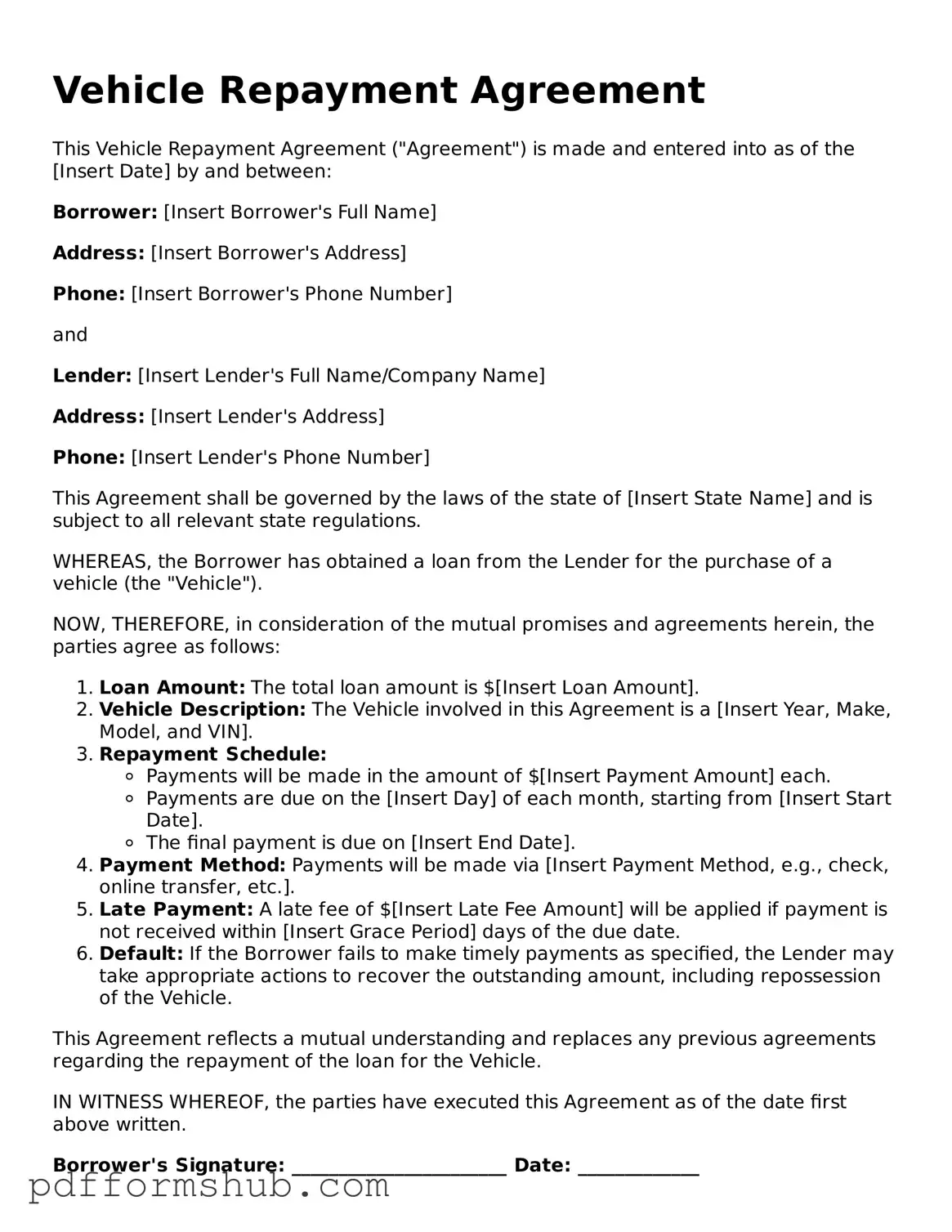Valid Vehicle Repayment Agreement Form
A Vehicle Repayment Agreement form is a legal document that outlines the terms and conditions under which a borrower agrees to repay a loan taken out for a vehicle purchase. This form serves to protect both the lender and the borrower by clearly stating the repayment schedule, interest rates, and any penalties for late payments. To get started, fill out the form by clicking the button below.
Customize Form
